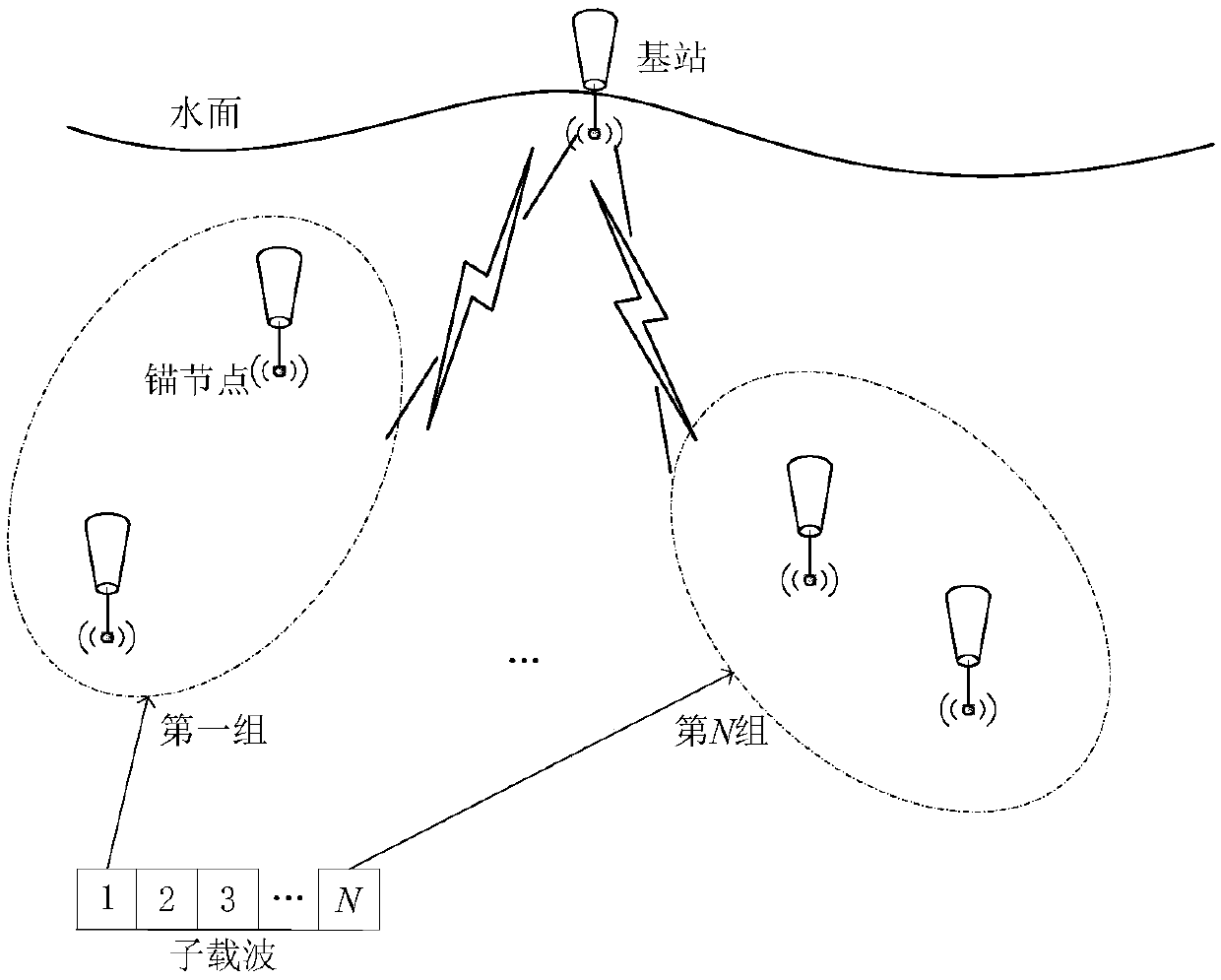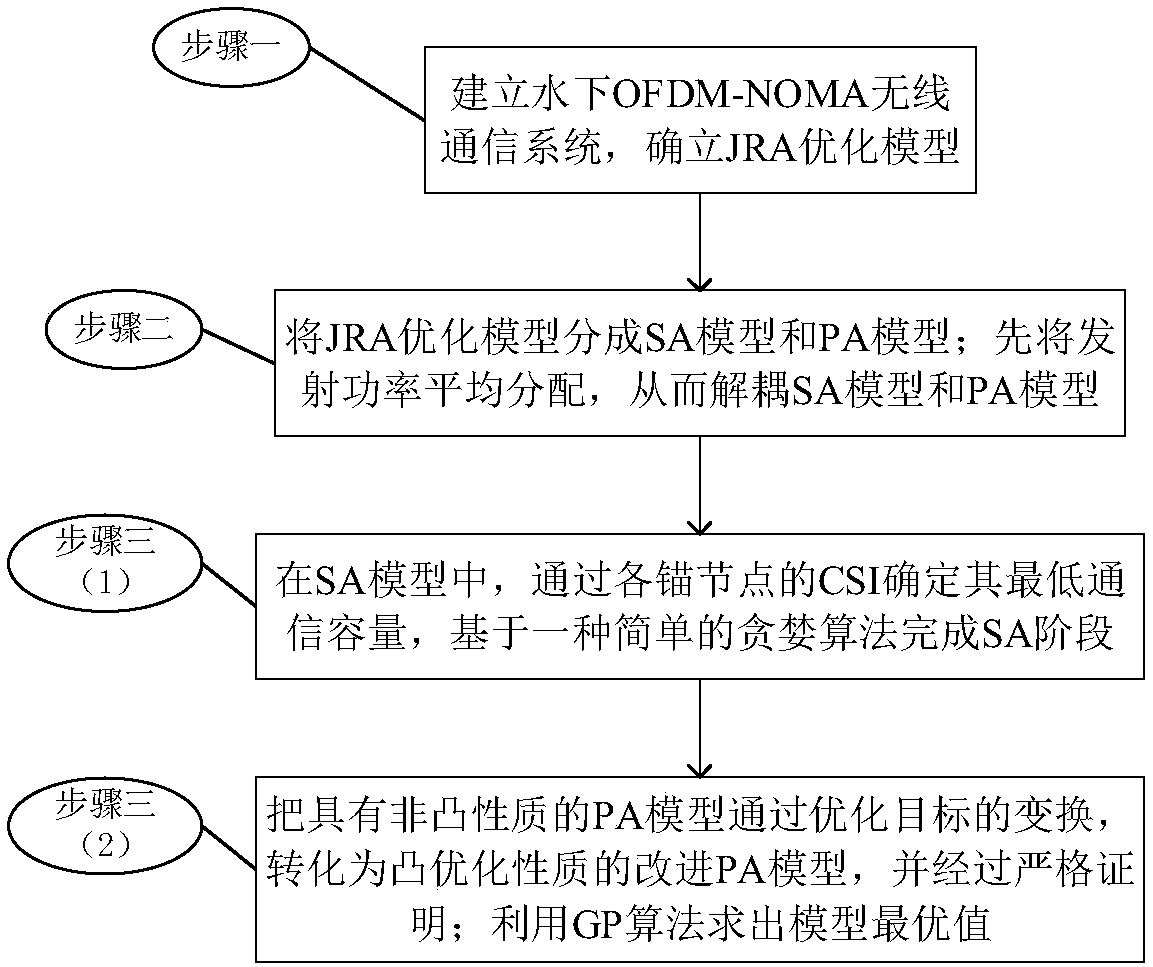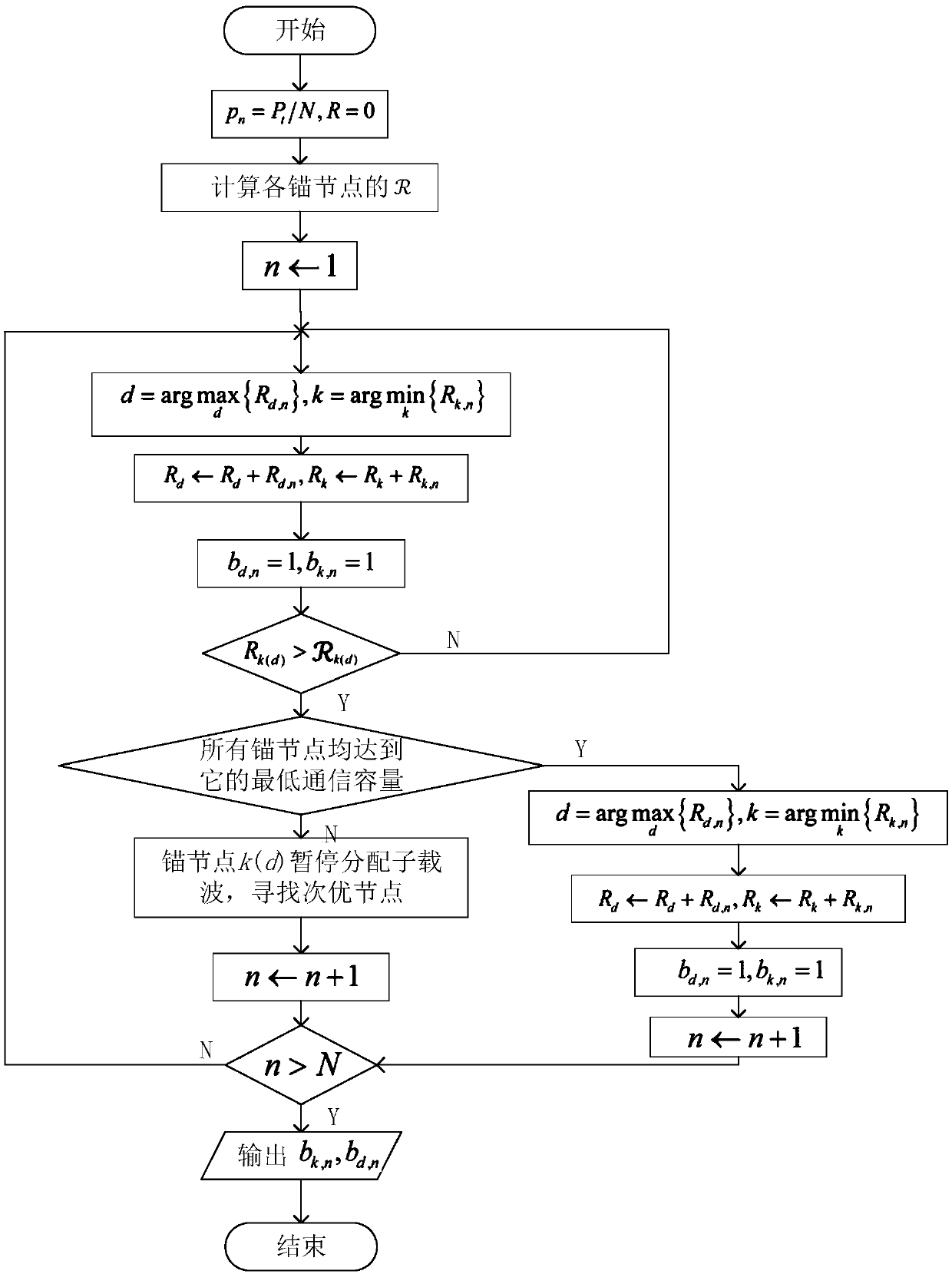Joint resource optimization method based on underwater acoustic OFDM-NOMA (Orthogonal Frequency Division Multiplexing-Non-Orthogonal Multiple Access) system downlink
An OFDM-NOMA, downlink technology, applied in the field of downlink joint resource optimization algorithm based on underwater acoustic OFDM-NOMA system
- Summary
- Abstract
- Description
- Claims
- Application Information
AI Technical Summary
Problems solved by technology
Method used
Image
Examples
Embodiment Construction
[0019] In order to make the purpose, technical solutions and beneficial effects of the present invention clearer, the present invention will be further described in detail below in conjunction with specific examples.
[0020] Such as Figure 1-3 As shown, this embodiment provides a joint resource optimization method based on OFDM-NOMA downlink, including the following steps:
[0021] S1. Establish an underwater wireless communication system based on OFDM-NOMA downlink.
[0022] The system includes a BS and K anchor nodes. collection for anchor nodes express. Each OFDM symbol contains N effective data subcarriers, with the set express. h k,n and p k,n are the power gain and transmit power of anchor node k on subcarrier n, respectively, and the environmental noise is additive white Gaussian noise N(0,σ 2 ). The channel SNR of anchor node k on subcarrier n can be expressed as:
[0023]
[0024] Using the two-stage superposition coding technique as the NOMA method, ...
PUM
 Login to View More
Login to View More Abstract
Description
Claims
Application Information
 Login to View More
Login to View More - R&D
- Intellectual Property
- Life Sciences
- Materials
- Tech Scout
- Unparalleled Data Quality
- Higher Quality Content
- 60% Fewer Hallucinations
Browse by: Latest US Patents, China's latest patents, Technical Efficacy Thesaurus, Application Domain, Technology Topic, Popular Technical Reports.
© 2025 PatSnap. All rights reserved.Legal|Privacy policy|Modern Slavery Act Transparency Statement|Sitemap|About US| Contact US: help@patsnap.com



